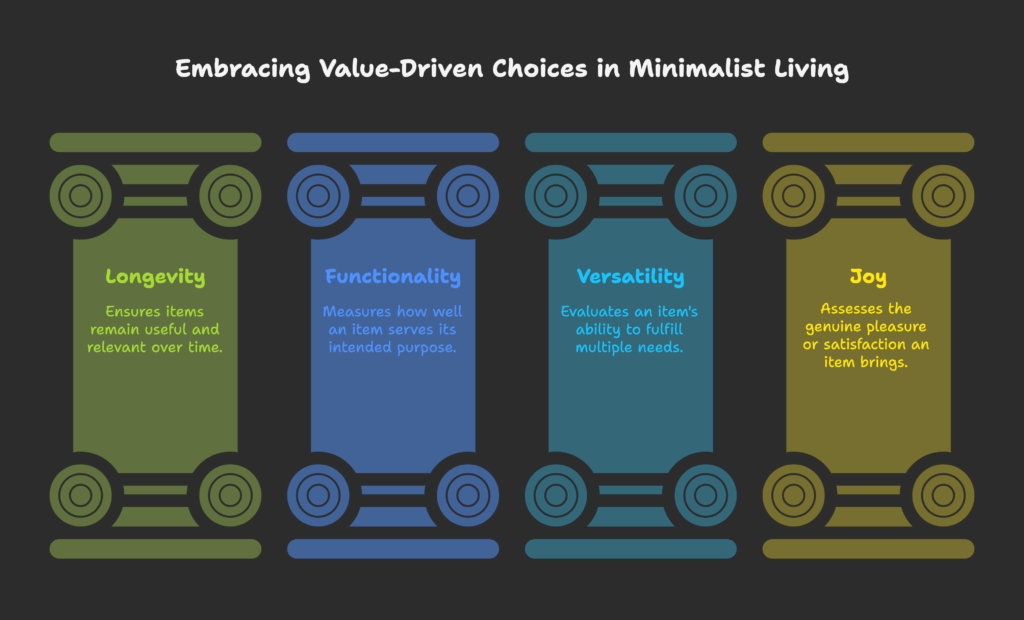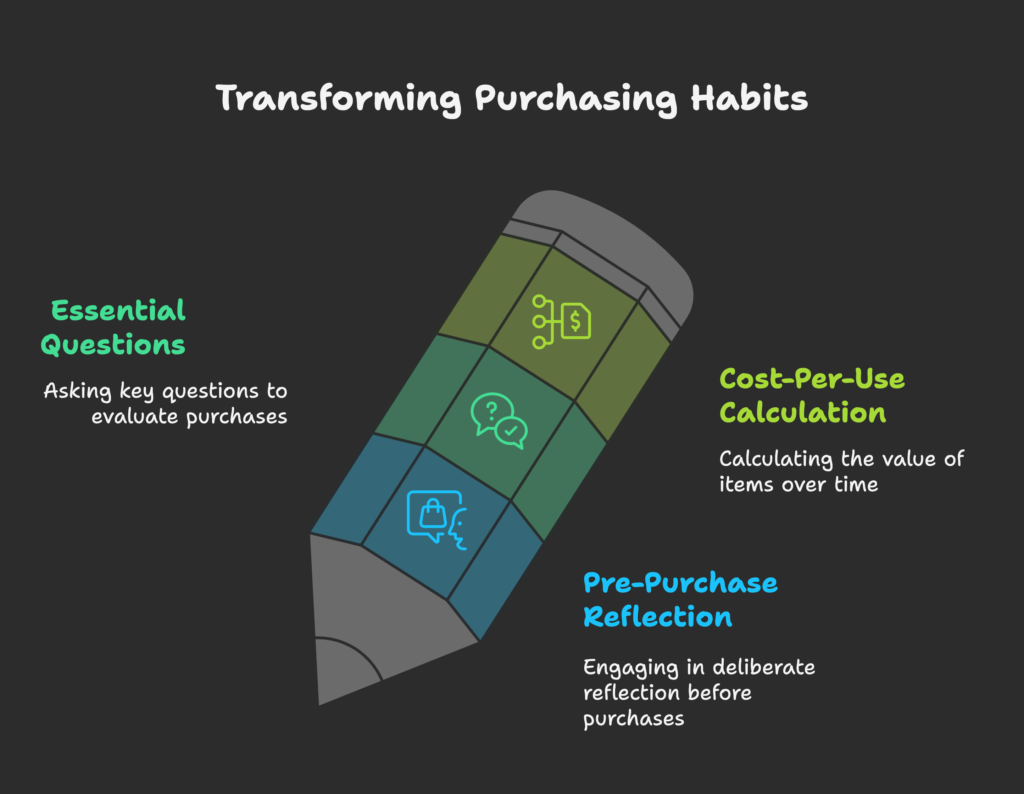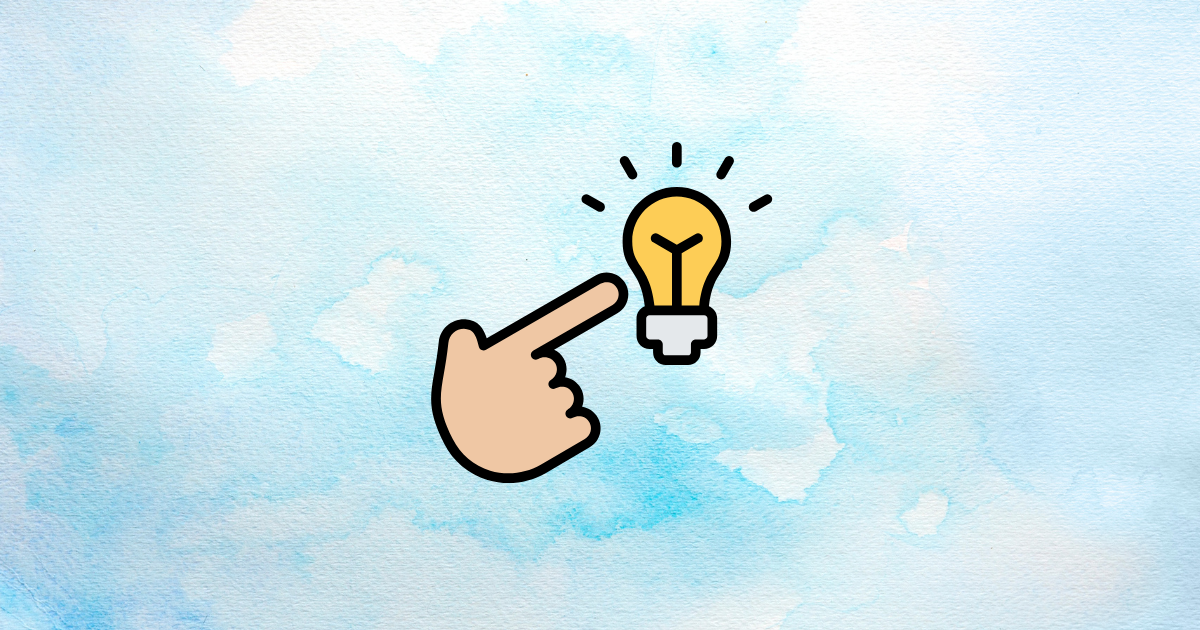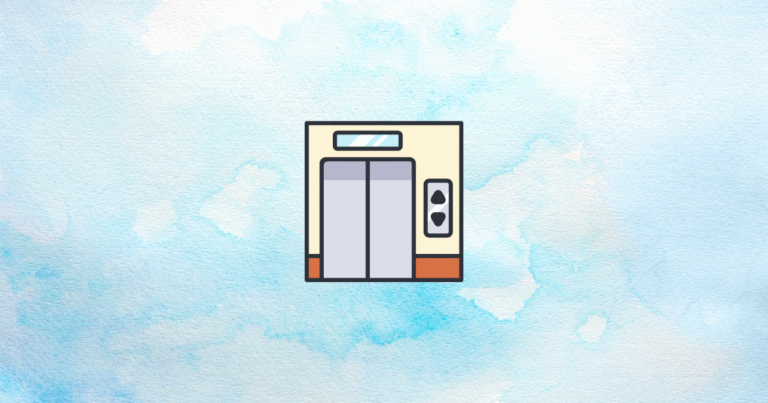Have you ever stood in front of your closet, filled to the brim with clothes, yet still felt like you have “nothing to wear”? Or perhaps you’ve walked into your living room and felt a wave of stress just looking at all the things you’ve collected over the years?
In today’s world of constant advertisements and one-click shopping, many of us find ourselves drowning in possessions that don’t truly bring us joy or serve a purpose. What if there was a better way to approach our relationship with things?
This is where minimalism comes in – not as a stark, empty lifestyle where you own next to nothing, but as a thoughtful approach to bringing only the things that add real value into your life.
By reading this article, you’ll discover:
- How to identify what truly matters when making purchases
- Practical frameworks for making better buying decisions
- The surprising psychological benefits of owning fewer, better things
- Real-world strategies to apply minimalist thinking to your home, wardrobe, and technology
- How this approach can actually save you money in the long run
Ready to find more peace, save money, and surround yourself only with things that genuinely enhance your life? Let’s dive in!
Introduction to Minimalism in Consumer Context
Before we jump into practical advice, let’s understand what modern minimalism really means in today’s consumer landscape. In this section, we’ll explore how minimalism has evolved from a design aesthetic to a powerful life philosophy that can transform your relationship with possessions.
The Evolving Definition of Minimalism
Minimalism hasn’t always been about decluttering or living with less. It began as an art movement that celebrated simplicity and essential forms. Today, it has transformed into something much more meaningful – a deliberate approach to living that focuses on intentionality rather than deprivation.
Modern minimalism isn’t about having a specific number of items or living in an all-white apartment with a single chair. Instead, it’s about moving away from mindless consumption toward thoughtful acquisition. It’s a response to our culture of information overload and the paralysis that comes from too many choices.
As Joshua Becker, founder of Becoming Minimalist, puts it: “Minimalism is the intentional promotion of the things we most value and the removal of anything that distracts us from it.”
The Psychology of Minimalist Consumption
Did you know that the average American home contains over 300,000 items? That’s a lot of decisions to make, items to clean, organize, and eventually discard. This abundance creates a genuine cognitive burden.
Research shows that our brains become overwhelmed when faced with too many choices – a phenomenon psychologists call “choice paralysis.” By embracing minimalist consumption, you reduce this decision-making burden, freeing your mental energy for more important things.
There’s also a fascinating emotional component. Studies reveal that our possessions can actually create stress rather than happiness. Each item we own demands a piece of our attention, creates maintenance requirements, and can even generate feelings of guilt when unused.
The Value Proposition of Minimalism
Minimalism offers multiple forms of value:
- Financial freedom – By making fewer, better purchases, you save money over time
- Time and attention – Less time spent shopping, organizing, and maintaining means more time for what truly matters
- Environmental benefits – Reduced consumption means less environmental impact
- Enhanced well-being – Studies consistently link simpler living with greater life satisfaction
Now that we understand what minimalism really means in today’s context, aren’t you curious about how to identify truly valuable purchases? Let’s explore how minimalists redefine “value” when deciding what to bring into their lives.
The Philosophy of High-Value in Minimalist Purchasing
In this section, we’ll shift our understanding of what makes a purchase worthwhile. If minimalism isn’t about buying nothing, then what exactly should we be buying? Let’s discover how to recognize genuine value that goes far beyond price tags.

Redefining “Value” in Consumer Decisions
For many of us, “value” has become synonymous with “cheap.” We celebrate finding bargains without considering what we’re actually getting for our money. Minimalist thinking flips this perspective entirely.
True value encompasses:
- Longevity – How long will this item remain useful and relevant?
- Functionality – How well does it serve its intended purpose?
- Versatility – Can it fulfill multiple needs?
- Joy – Does it bring genuine pleasure or satisfaction?
This comprehensive assessment often leads to selecting items that may cost more upfront but deliver far greater value over their lifetime.
Quality Metrics in Minimalist Assessment
How do you recognize quality when you see it? Minimalists develop a keen eye for the markers of items that will stand the test of time:
- Materials and craftsmanship – Natural materials often age better than synthetic ones, and attention to detail in construction predicts longevity
- Repairability – Can the item be fixed if something goes wrong, or is it designed to be replaced?
- Timelessness – Will this look as good and function as well in five or ten years?
- Versatility – The best purchases serve multiple purposes and adapt to different situations
These considerations help minimize the total number of possessions needed while maximizing their utility and lifespan.
The Minimalist Approach to Luxury
Here’s a common misconception: minimalism equals frugality. In reality, they’re distinct philosophies. Frugality focuses primarily on spending less, while minimalism focuses on optimizing value – which sometimes means spending more.
The minimalist approach to luxury isn’t about status symbols or brand names. It’s about investing in exceptional quality and craftsmanship in the few categories that matter most to you personally.
For example, a passionate home cook might invest in a single, professional-grade chef’s knife that will last decades rather than replacing a set of mediocre knives every few years.
Now that we understand what constitutes value in the minimalist mindset, how do we actually make these decisions in practice? Let’s explore some practical frameworks that can guide our purchasing decisions.
Decision-Making Frameworks for Minimalist Purchases
Making thoughtful decisions doesn’t happen by accident. In this section, you’ll discover practical tools and mental frameworks that can transform your purchasing habits and help you identify what truly deserves a place in your life.

Pre-Purchase Reflection Strategy
Before any significant purchase, minimalists typically engage in deliberate reflection. Here’s a simple pre-purchase routine you can adopt:
- Identify the genuine need – Is this addressing a real requirement or merely a momentary want?
- Institute a waiting period – For non-urgent purchases, try waiting 30 days. If you still want it after a month, it’s less likely to be an impulse buy.
- Research thoroughly – Investigate options, read reviews from actual users, and understand the quality differences between alternatives.
- Consider your existing possessions – Could something you already own fulfill this need? Would this create redundancy?
This thoughtful approach often results in either better purchases or the realization that the purchase isn’t necessary at all.
Essential Questions for Minimalist Purchasing
When evaluating a potential purchase, try asking yourself these revealing questions:
- “Does this add genuine value to my life?” – Beyond momentary pleasure, will this truly enhance your daily experience?
- “Will this serve multiple purposes or scenarios?” – The most valuable items are often the most versatile.
- “Is this replacing something that cannot be repaired?” – Replacement should be a last resort, not a default action.
- “Does this align with my core values and priorities?” – Your possessions should reflect and support what matters most to you.
These questions act as a filter, helping you differentiate between items that deserve a place in your life and those that don’t.
The Cost-Per-Use Calculation
Here’s a simple yet powerful mathematical approach to evaluating purchases:
Cost per use = Total cost ÷ Number of uses
This calculation reveals the true value of an item over time. For example:
- A $20 t-shirt worn 10 times costs $2 per wear
- A $100 quality t-shirt worn 100 times costs $1 per wear
Suddenly, the “expensive” option becomes the better value. This perspective shift helps justify investment purchases and illuminates the false economy of cheap, disposable items.
These decision-making frameworks can transform how you approach purchases, but have you considered the mental and emotional benefits of this minimalist approach? Let’s explore the surprising psychological advantages of owning fewer, better things.
Psychological Benefits of Minimalist High-Value Purchases
The benefits of minimalist purchasing extend far beyond financial savings or environmental impact. In this section, we’ll uncover how this approach can profoundly impact your mental well-being and daily experience.
Reduced Cognitive Load
Every item you own makes small but persistent demands on your attention and mental energy. Psychologists call this “cognitive load” – the total amount of mental effort being used in your working memory.
When you own fewer, better things:
- You experience less decision fatigue from choosing between similar items
- You spend less mental energy tracking, organizing, and maintaining possessions
- Your physical spaces become calmer and less visually distracting
- You create more mental space for creativity, relationships, and meaningful activities
Neuroscientists have found that visual clutter competes for our attention and actually inhibits our ability to focus. By reducing this visual noise, minimalist spaces help restore our capacity for attention and presence.
Satisfaction and Well-being Improvements
Research consistently shows that thoughtfully chosen purchases bring more lasting satisfaction than impulsive ones. When you carefully select high-value items:
- You experience higher satisfaction with each purchase
- You feel less buyer’s remorse or post-purchase anxiety
- You develop a greater sense of control over your consumption
- You create stronger emotional connections with fewer, more meaningful objects
A fascinating study published in the Journal of Consumer Research found that people who invested in experiences rather than numerous material possessions reported greater happiness and sense of well-being.
Freedom from Consumption Cycles
Perhaps most importantly, minimalist purchasing liberates you from manipulative consumer cycles:
- You become less susceptible to trend-based marketing that promotes constant replacement
- You develop greater resilience against advertising that creates artificial needs
- You free yourself from the social comparison trap of keeping up with others’ consumption
- You reclaim time and energy previously spent on shopping and browsing
This freedom creates space for more meaningful pursuits and connections, often leading to greater life satisfaction overall.
Now that we understand the powerful psychological benefits, let’s get practical. How can we apply these minimalist principles to specific categories of purchases in our everyday lives?
Practical Application to Key Purchase Categories
Theory is helpful, but application is where real change happens. In this section, we’ll explore how to apply minimalist principles to specific categories of everyday purchases, from your living space to your digital life.
Living Space and Home Essentials
Your home environment significantly impacts your daily experience. Here’s how to apply minimalist thinking to this crucial area:
- Furniture selection: Invest in fewer, better pieces that serve multiple functions. A high-quality sofa bed, for example, serves both daily living and guest accommodation.
- Material considerations: Natural materials like solid wood, wool, and cotton typically age better and bring more sensory pleasure than synthetic alternatives.
- Appliance choices: Select appliances with repairable components and proven longevity rather than the latest features that may quickly become outdated.
- Space optimization: Before adding anything, ask: “Does this enhance the functionality or beauty of this space?” If not, it likely doesn’t belong.
Remember that each square foot of your living space is valuable real estate. Everything occupying that space should earn its place through utility, beauty, or profound personal meaning.
Technology and Digital Purchases
Technology presents unique challenges for minimalists due to rapid innovation cycles. Here’s a sustainable approach:
- Prioritize repairability: Companies like Fairphone and Framework design products specifically for repair and upgrade rather than replacement.
- Focus on core functionality: Identify what you actually need a device to do, rather than being seduced by cutting-edge features you’ll rarely use.
- Consider the ecosystem: Sometimes paying more for devices within a compatible ecosystem reduces the total number of gadgets needed.
- Apply digital minimalism: Curate your digital subscriptions, apps, and online accounts with the same care you apply to physical objects.
The most sustainable device is often the one you already own. Consider whether performance upgrades or repairs might extend the life of existing technology before replacing it.
Wardrobe and Personal Items
Few areas benefit more from minimalist thinking than your clothing and personal accessories:
- Develop a capsule wardrobe: A limited collection of versatile, high-quality pieces that can be mixed and matched reduces decision fatigue while ensuring you always have something appropriate to wear.
- Prioritize natural fibers: Materials like wool, cotton, linen, and silk typically look better, feel better, and last longer than synthetic alternatives.
- Focus on fit and proportion: Well-fitting clothes in shapes that flatter your body create a more polished appearance than trendy items that don’t suit you.
- Choose timeless over trendy: Classic designs remain relevant for years or decades, while trends can look dated within months.
The goal isn’t necessarily fewer clothes, but better clothes that serve you well and bring genuine joy when worn.
Experience-Based Purchasing
Perhaps the most aligned with minimalist values is the shift toward experiences over objects:
- Invest in learning: Courses, workshops, and education provide lasting value through skill development and personal growth.
- Prioritize health and wellness: Money spent on preventative healthcare, quality food, and fitness often delivers the highest return on investment.
- Create shared memories: Experiences with loved ones build connections and create lasting happiness more reliably than material gifts.
- Support your passions: Tools and resources that enable creative expression or deep engagement with hobbies are typically worth their cost.
The most valuable purchases often don’t involve acquiring more possessions, but rather enhancing your capabilities, relationships, and well-being.
But wait – doesn’t buying higher quality items cost more? Let’s explore the fascinating financial implications of minimalist purchasing and discover why this approach often saves money in the long run.
Financial Implications of Minimalist Purchasing
One of the most common misconceptions about minimalism is that it requires spending more money. In this section, we’ll explore the surprising economic advantages of buying fewer, better things and how this approach can actually improve your financial health.
Short-Term Investment, Long-Term Savings
Minimalist purchasing often requires a paradigm shift in how we think about costs:
- Initial investment vs. lifetime value: Higher upfront costs are offset by longer useful life and fewer replacements
- Maintenance economics: Quality items typically require less frequent maintenance and are more likely to be worth repairing
- Hidden costs of cheap goods: Lower-quality items often carry hidden costs in terms of replacement, frustration, and underperformance
Consider this example: A $200 pair of well-made leather boots might last 10 years with proper care, costing $20 per year. Meanwhile, a $50 pair that needs replacement annually costs $50 per year – more than double over the same period.
Budgeting for High-Value Acquisitions
Minimalist purchasing requires different financial planning approaches:
- Value-based savings: Set aside money specifically for high-quality, long-lasting purchases
- Opportunity fund: Create a dedicated account for replacing essential items with better versions when they wear out
- Delayed gratification: Save for quality purchases rather than using credit for immediate, lower-quality alternatives
- Total cost of ownership calculations: Factor in all costs associated with an item over its full lifespan
This approach transforms spending from impulsive to intentional and shifts the focus from immediate gratification to long-term satisfaction.
Resale Value and Circular Economy
Another financial benefit of quality purchases is their retention of value:
- Secondary market potential: Well-made items often maintain significant resale value
- Buy-it-for-life categories: Some purchases actually appreciate over time or can be sold for near their purchase price after years of use
- Participation in circular economy: Quality secondhand items enable both buying and selling in the pre-owned market
For example, premium kitchenware brands like Le Creuset or professional tools like those made by Festool often retain 60-80% of their value even after years of use. This creates a form of “use equity” that cheap disposable alternatives simply cannot match.
While the financial benefits are compelling, minimalist purchasing isn’t without challenges. Let’s explore some common pitfalls and how to avoid them on your journey toward more intentional consumption.
Challenges and Potential Pitfalls
Every worthwhile approach comes with its challenges. In this section, we’ll honestly address the difficulties you might encounter when adopting minimalist purchasing habits and provide practical strategies to overcome them.
The “Expensive Minimalism” Trap
One of the most common pitfalls is confusing minimalism with luxury consumption:
- Brand fetishization: Getting caught up in premium brands rather than focusing on actual quality and utility
- Perfection seeking: Waiting for the “perfect” item can lead to analysis paralysis or unnecessary spending
- Minimalist aesthetics vs. values: Purchasing new items to achieve a minimalist “look” rather than embracing the underlying principles
Remember that high price doesn’t automatically equal high value. The goal is to identify the point of diminishing returns – where additional cost no longer delivers proportional benefits in quality or longevity.
Social and Cultural Pressures
Our consumption patterns don’t exist in a vacuum. Social influences can challenge minimalist intentions:
- Gift-giving expectations: Navigating holidays and celebrations in a culture centered around material exchanges
- Professional appearance standards: Balancing minimalist wardrobes with workplace expectations
- Social comparison: Resisting the urge to keep up with others’ consumption patterns
- Family dynamics: Managing relationships with those who may not understand or share your minimalist values
Developing clear communication about your values and finding creative alternatives (like experience gifts or quality time) can help navigate these pressures without compromising your principles.
Finding Balance and Avoiding Extremes
Perhaps the most important challenge is avoiding dogmatic approaches to minimalism:
- Flexibility vs. rigidity: Creating principles that can adapt to changing life circumstances
- Judgment and perfectionism: Being kind to yourself when you don’t make the “perfect” purchasing decision
- Practical vs. ideological minimalism: Focusing on what works for your unique situation rather than adhering to someone else’s definition
The goal isn’t perfect minimalism but rather a more intentional relationship with possessions that enhances rather than complicates your life.
Theory and principles are helpful, but sometimes seeing real examples brings concepts to life. Let’s explore some practical case studies of minimalist purchasing in action.
Case Studies and Practical Examples
Abstract principles come alive through concrete examples. In this section, we’ll walk through real-world applications of minimalist purchasing across different categories to see these concepts in practice.
Technology Purchase Case Study
Let’s compare two approaches to laptop purchasing:
Conventional Approach: Buying a $700 budget laptop every 2-3 years as performance declines and parts fail.
Minimalist Approach: Investing $1,400 in a high-quality laptop with upgradeability, repairability, and longevity in mind.
Over a 6-year period:
- Conventional approach: $1,400-$2,100 total cost (2-3 replacements)
- Minimalist approach: $1,400 initial cost + $200 in upgrades = $1,600 total
Beyond cost savings, the minimalist approach offers:
- Reduced electronic waste
- Less time spent researching, setting up, and transferring data to new devices
- More consistent user experience without adjustment periods
- Typically higher performance throughout the ownership period
Wardrobe Transformation Example
Consider this real-world wardrobe transformation:
Before: 120+ clothing items, mostly inexpensive, with 65% rarely or never worn. Total estimated value: $3,000.
After: 40 high-quality, versatile items that mix and match effectively. Total value: $4,000.
The results:
- Morning decision time reduced from 15 minutes to 3 minutes
- Annual clothing budget decreased by 40% despite higher per-item cost
- Significantly higher satisfaction with outfit choices
- Reduced environmental impact through fewer, better-made items
The transformation required an initial investment but quickly paid dividends in time, money, and satisfaction.
Home Furnishing Strategic Approach
Here’s how minimalist principles might apply to furnishing a living room:
Conventional Approach: Purchase a complete living room set for $2,000, replace when trends change or items wear out (typically 5-7 years).
Minimalist Approach: Invest in fewer, higher-quality pieces that will last 15+ years with proper care.
- High-quality sofa with replaceable cushions and classic design: $2,500
- Solid wood coffee table that will age beautifully: $800
- Versatile side tables that can function in multiple rooms: $600
While the initial investment is higher ($3,900 vs. $2,000), the minimalist approach creates:
- Pieces that appreciate in character over time rather than deteriorating
- Furniture that can be repaired rather than replaced
- A timeless aesthetic that won’t look dated as trends change
- Lower cost over a 15-year timeframe (no replacements needed)
These case studies demonstrate that minimalist purchasing isn’t about deprivation but about strategic investment in quality over quantity. Are you ready to begin your own minimalist journey? Let’s explore how to get started.
Implementation Guide for Beginners
The principles of minimalist purchasing sound appealing, but where do you actually begin? This section provides a practical roadmap for those just starting their journey toward more intentional consumption.
Starting the Minimalist Journey
The path to minimalist purchasing begins with awareness:
- Consumption audit: Track all purchases for one month to identify patterns and pain points in your current habits
- Value identification: Reflect on what truly matters to you and how your possessions should support those priorities
- Start small: Begin with a single category (like clothing or kitchen items) rather than trying to transform everything at once
- Create a priority list: Identify items that would benefit most from upgrading to higher quality
Remember that minimalism is a process, not an overnight transformation. The goal is progress, not perfection.
Developing Minimalist Shopping Habits
Once you’ve built awareness, focus on changing your purchasing behavior:
- The 24-hour rule: For non-essential purchases, wait at least 24 hours before buying to reduce impulse decisions
- Research rituals: Develop a consistent process for researching significant purchases, including quality indicators and reviews
- Questions checklist: Create a personal list of questions to ask before any purchase (based on the frameworks we discussed earlier)
- Community support: Connect with like-minded individuals through minimalist communities online or in-person for guidance and encouragement
These practices help reshape your relationship with consumption, moving from reactive to proactive purchasing.
Long-Term Sustainability of Minimalist Practices
Maintaining minimalist habits over the long term requires adaptability:
- Regular reassessment: Schedule periodic reviews of your possessions and purchasing patterns
- Evolving criteria: Allow your definition of “value” to mature as your life circumstances change
- Maintenance routines: Develop habits that extend the life of your high-quality items
- One-in, one-out rule: For stable categories, consider removing something when adding something new
Sustainable minimalism isn’t rigid – it bends with life’s changes while maintaining core principles of intentionality and value focus.
As we look ahead, how might minimalist consumption evolve in our rapidly changing world? Let’s explore some emerging trends and possibilities.
The Future of Minimalist Consumption
Minimalist purchasing isn’t just a personal choice – it’s part of broader shifts in how we relate to possessions and consumption. In this final section, we’ll explore emerging trends that are shaping the future of intentional purchasing.
Technological Influences
Technology is transforming minimalist possibilities in several key ways:
- Digital minimalism: Applying intentional principles to our digital lives and online consumption
- Sharing economy platforms: Enabling access to goods without ownership through rentals and borrowing services
- Modular design: Creating products with replaceable or upgradeable components to extend useful life
- Virtual possessions: Shifting certain categories (like entertainment and media) from physical to digital formats
These technological shifts are making it easier to live with fewer material possessions while maintaining or enhancing quality of life.
Evolving Market Responses
As consumer priorities shift, markets are adapting:
- Transparency movement: Increasing information about materials, manufacturing conditions, and expected product lifespan
- Lifetime warranty offerings: More companies differentiating through guarantees of quality and durability
- Repair-friendly design: Products created with maintenance and part replacement in mind
- Quality-focused startups: New brands emerging specifically around durable, timeless products
These market adaptations make it easier for consumers to identify and access high-value, long-lasting items.
Cultural Shifts and Broader Implications
Minimalist purchasing is part of broader cultural evolutions:
- Post-materialism values: Growing emphasis on experiences, relationships, and personal growth over accumulation
- Environmental consciousness: Increasing awareness of the ecological impact of consumption patterns
- Identity evolution: Less attachment to possessions as markers of success or personal identity
- Wellbeing focus: Greater recognition of the relationship between simplicity and mental health
These shifts suggest that minimalist purchasing principles may become increasingly mainstream rather than remaining a niche approach.
Conclusion: The Path to Serenity Through Simplicity
As we’ve explored throughout this article, minimalist purchasing isn’t about deprivation – it’s about liberation. By focusing on fewer, better things, we free ourselves from the burden of excessive possessions while surrounding ourselves with items that truly enhance our lives.
The benefits extend far beyond tidy closets or stylish interiors. This approach offers financial savings, environmental benefits, psychological well-being, and more time for what truly matters. It’s a path toward greater intentionality in all aspects of life.
Whether you’re just beginning to question your relationship with consumption or you’re well along the minimalist path, remember that this is a personal journey. There’s no perfect formula or fixed destination – only the ongoing practice of asking “What truly adds value to my life?” and letting that question guide your choices.
If you’re a Shopify store owner looking to apply these minimalist principles to your business growth, consider exploring Growth Suite app. This powerful tool can help you streamline your operations, focus on what truly matters, and increase sales with greater intentionality and less wasted effort – the perfect complement to minimalist business philosophy.
References
- Maroun El Najjar. (2024). “Simplicity is The Evolving Modern Luxury.” LinkedIn. https://www.linkedin.com/pulse/simplicity-evolving-modern-luxury-maroun-el-najjar-svhif
- Drumbeat. (2024). “The philosophy of minimalism in brand design.” https://www.wearedrumbeat.com/the-philosophy-of-minimalism-in-brand-design/
- House and Hold. (2023). “Minimalism in Interior Design: Achieving Balance and Serenity.” https://www.houseandhold.com/blogs/modern-design-blog/minimalism-in-interior-design-achieving-balance-and-serenity
- LinkedIn. (2025). “Minimalist Design: The Key to Unlocking Better Consumer Behavior.” https://www.linkedin.com/pulse/minimalist-design-key-unlocking-better-consumer-behavior-lbgtc
- Euromonitor. (2023). “Global Consumer Type: Minimalist Seeker.” https://www.euromonitor.com/article/global-consumer-types-minimalist-seeker
- Gustafa. (2022). “A Minimalist Approach to (Tech) Purchases.” https://www.gustafa.se/2022/09/06/a-minimalist-approach-to-tech-purchases%EF%BF%BC/
- Rich in What Matters. (2025). “9 Ways Minimalism Will Save You Money in 2025.” https://richinwhatmatters.com/2025/01/04/9-ways-minimalism-will-save-you-money-in-2025/
- Experian. (2025). “How Minimalism Can Save You Money.” https://www.experian.com/blogs/ask-experian/ways-minimalism-saves-money/
- Happy Simple Mom. (2023). “Money, Less Stuff: 10 Minimalist Secrets to Supercharge Your Savings.” https://www.happysimplemom.com/minimalism-saves-money/
- Balance Through Simplicity. (2025). “Minimalism and Shopping: How to Shop with Intention.” https://balancethroughsimplicity.com/minimalism-and-shopping-18-ways-to-shop-with-intention/




